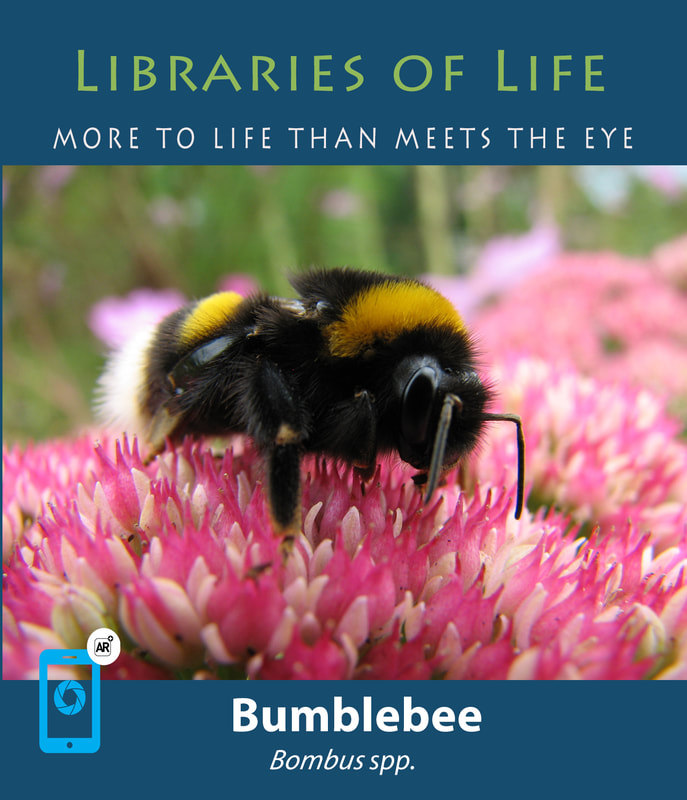BUMBLEBEE Did you know?
|
CLICK TO DOWNLOAD CARD
Bumblebee |
Bumble bees are fuzzy insects measuring about ¾-inch to 1-inch in length. The have four wings that move rapidly, sometimes at a rate of 130-240 beats per second. This allows them to make that characteristically loud buzzing sound as they fly from flower to flower. This ability, combined with their large size, allows the bees to vibrate flowers until they release pollen. This is called buzz pollination and makes bumble bees extraordinary pollinators. In fact, bumble bees help pollinate food crops such as: kiwi, cranberry, blueberry, cherry, pear, plum, apple, blackberry, orange, lemon, melons, peach, sunflowers, tomato, peppers, squash, and many others. Bumble bees are very social insects. Their colonies are usually located underground in abandoned holes created by rodents and other species. Their nest contains between 50 and 500 individuals. Bumblebee colonies will die in late fall, and the queen overwinters until the start of spring. She then begins to lay eggs, thus starting a new colony. Bumblebees face many threats, including habitat loss, introduced diseases, pesticides, climate change, and competition from honey bees. You can help bumblebees by creating pollinator habitat in your yard with native plant species, and by lowering the amount of insecticides and pesticides you use. Click HERE to learn more about plants that attract bumblebees
|


